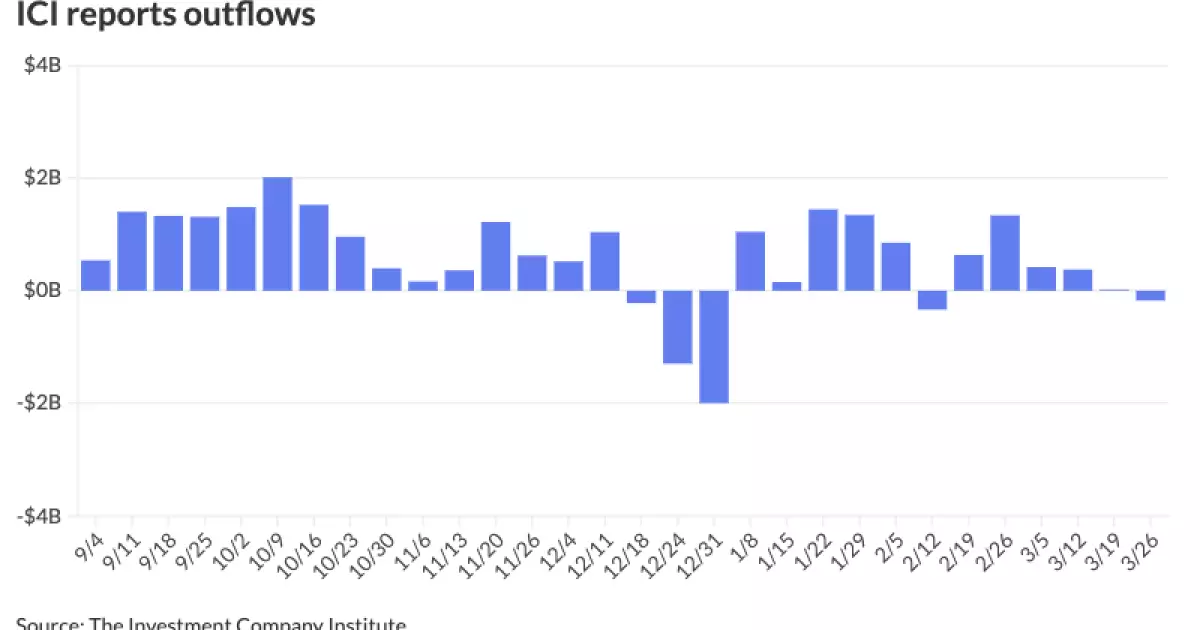In a world where economic volatility seems to be the new norm, financial markets are at the mercy of uncertainty. Recent announcements, particularly those signaling the implementation of sweeping new tariffs, have sent shockwaves that ripple through various sectors. The market’s response was as chaotic as one could expect; U.S. Treasuries opened stronger only to backtrack dramatically as the day’s events unfolded. This erratic behavior raises eyebrows and triggers fears of a prolonged period of financial instability.
What we see here is not merely a response to policy changes but an anxious overreaction driven by an atmosphere of confusion and unpredictability. J.P. Morgan strategists highlighted this paradox when they noted that the markets are currently beset by “fear, not fundamentals.” The psychological impact of policy uncertainty cannot be overstated; it creates a paralyzing environment for businesses and investors alike. In an era when sound economic fundamentals seem robust, it’s troubling that sentiment could swing so drastically based on political speeches and promises.
Tariffs: A Double-Edged Sword
The implication of tariffs extends beyond mere commerce; it strikes at the heart of corporate strategy and operational stability. By implementing new tariffs, particularly those that target key trading partners like Canada and Mexico, the administration has not only stirred anxiety within markets but also raised the specter of retaliation, complicating trade relationships further. This raises an unsettling question: do these tariffs serve as effective leverage, or are they merely a catalyst for economic isolationism?
A noteworthy point brought forth by experts is that tariffs could be wielded as bargaining chips to confront “unfair trading practices.” However, the potential fallout from such strategies could lead to a tit-for-tat that upends established supply chains, ultimately destabilizing the economy and provoking a reactionary cycle of protectionism that could prove devastating.
A Fragile Future Defined by Uncertainty
The growing concern over economic and geopolitical risks exacerbates the mounting apprehension. As noted by James Pruskowski, the chief investment officer at 16Rock Asset Management, the confidence that once underpinned corporate outlooks is undeniably crumbling. Economic data appears wobbly, with recession fears creeping around corners previously thought to be safe.
Markets often thrive on consumer and investor confidence—two pillars that now show signs of crumbling. This deeply problematic scenario isn’t merely about numbers on a balance sheet; it’s about a broader sense of trust that fuels economic activity. Businesses may halt investment, consumers may draw back on spending, and the cumulative impact can stymie growth, a dangerous slope toward stagnation.
Impact on Municipal Bonds and Local Economies
Perhaps the most insidious effect of this turbulence is its impact on municipal bonds, a critical lifeline for local governments and services. The stability of municipal bonds is being tested as fiscal and policy risks loom large. The yields on these bonds, while currently stable, are under threat from the broader market uncertainties and potential policy changes, such as the re-emergence of discussions regarding capping the tax exemption on municipal bonds.
Such developments could stifle local governments’ ability to fund essential services and infrastructure projects. If necessary funding becomes strained, the repercussions would be felt across public sectors, from education to health care, disproportionately affecting lower-income communities that rely most heavily on public services.
The Need for Clarity and Direction
In an age where the political landscape seems to oscillate unpredictably, the call for clarity and coherent economic policy has never been more urgent. Markets crave a sense of direction that is currently lacking. When economic policies lack transparency or seem reactionary, investor confidence fades, leading to a dangerous self-fulfilling prophecy of economic downturns.
The Federal Reserve’s focus on inflation amid these climate conditions is another point of contention. Ignoring the potential for stagflation—a toxic mix of stagnant growth and rising prices—could have catastrophic consequences. The central bank must handle its responsibilities with an eye toward the broader implications of its policies, as inflation control can’t alone suffice to navigate a stormy economic sea.
In this moment of profound uncertainty, it is incumbent upon policymakers to prioritize clarity and communication. Without action guided by foresight, we risk facing deeper economic malaise as investors and businesses negotiate a landscape overshadowed by fear and uncertainty.

